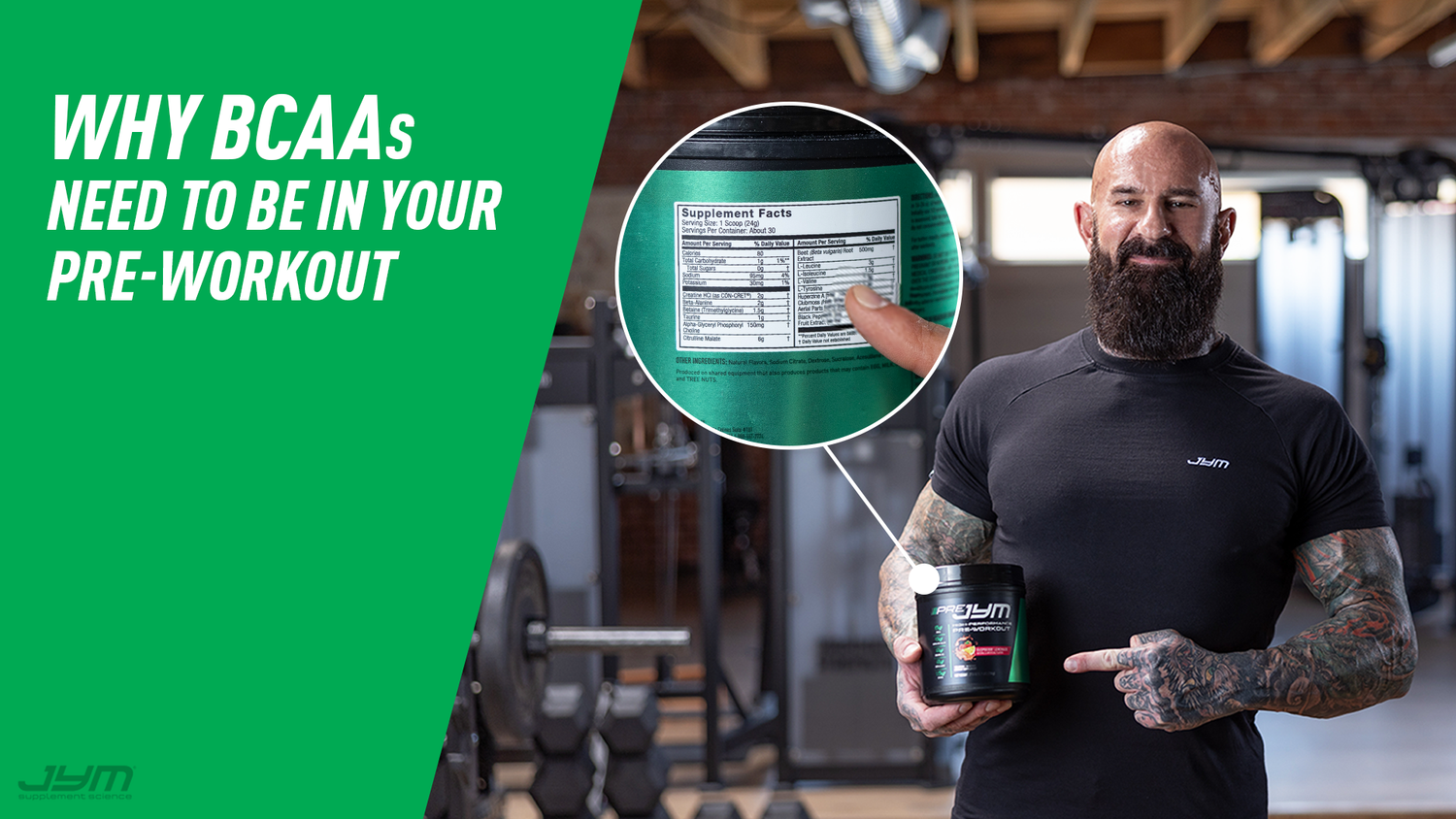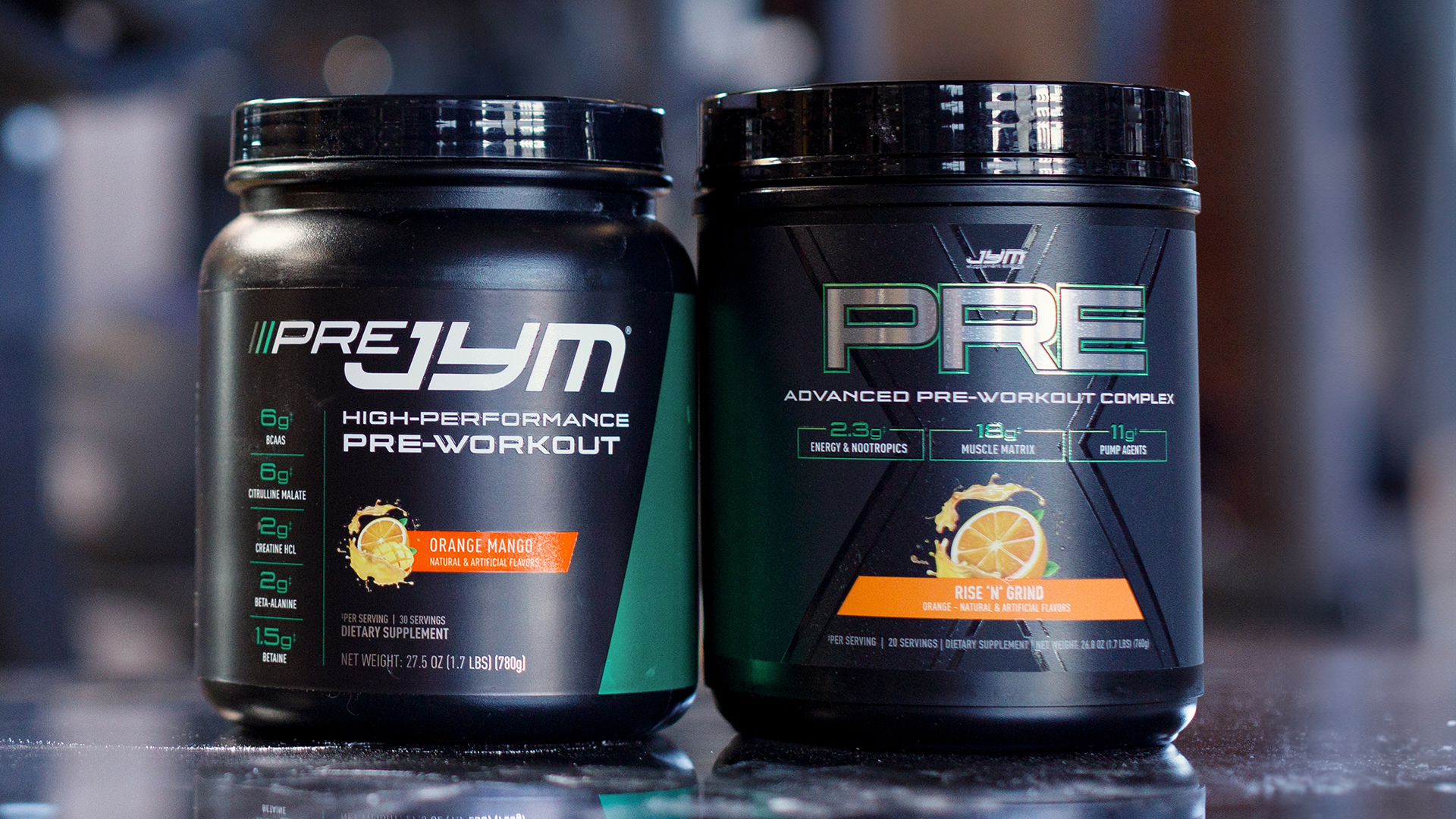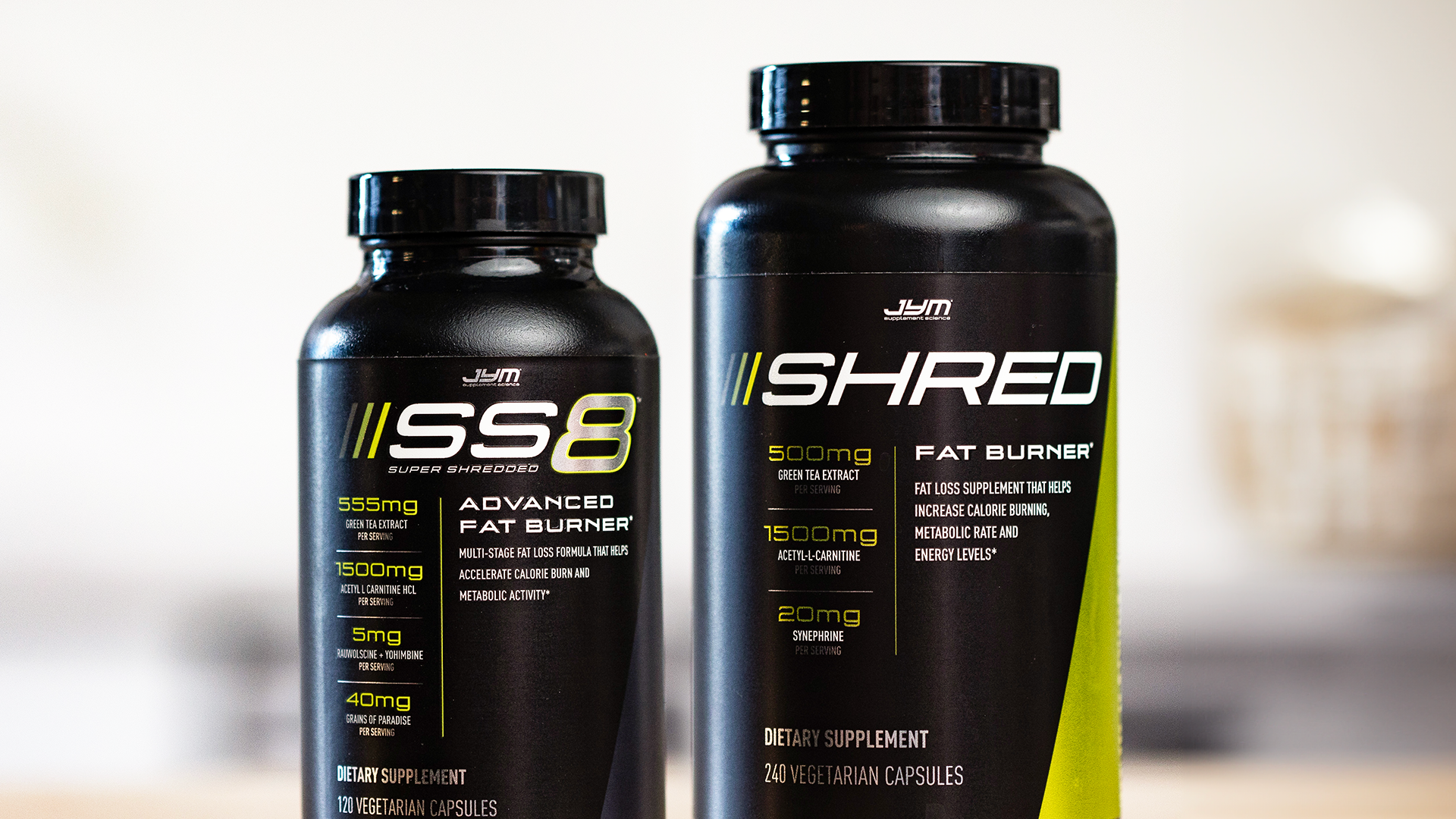Branched-chain amino acids (BCAAs) are the fuel your muscles need for amazing workouts.
Any pre-workout that doesn’t contain BCAAs is incomplete. Plain and simple.
Some will say you don’t need BCAAs before you train, and they’re wrong. When you understand how the body and muscles utilize BCAAs at different times during the day, particularly around exercise, you’ll see why BCAAs need to be in your pre-workout for the best possible training sessions… and results.
What are BCAAs?
Branched-chain amino acids (BCAAs) are the three most critical amino acids for building muscle, but they do far more than that. They also boost energy levels, delay muscle fatigue, and even aid fat loss.
The BCAAs include the three essential amino acids: leucine, isoleucine, and valine. From a chemical structure standpoint, each of these amino acids has a forked outcropping that looks a lot like a branch; that's where they get their name from.
How BCAAs Work in the Body
The reason BCAAs are so beneficial lies in how the body handles them. When you ingest amino acids, they usually first travel to the liver, which can break them down to use as fuel if necessary rather than for building and repairing muscle. BCAAs tend to be spared by the liver and get sent directly to the muscles.
Unlike other amino acids, muscles can either use BCAAs directly for fuel or to build and repair themselves. When taken before or during workouts, BCAAs act as a fuel source to promote intense, productive training sessions. This is precisely why you want to take BCAAs before hitting the gym, and why they should be in your pre-workout.
Do you also want your muscles to use BCAAs to build and repair themselves? Of course. That’s why BCAAs are also in Post JYM – because building and repairing is how the three amino acids will be used after a workout.
Rocket Fuel For Your Workouts
As I just mentioned, BCAAs are used for fuel by muscles during workouts. The more intense and the longer the workout, the more BCAAs that will be used. So, you can see how taking a dose of BCAAs before workouts can give you more energy to help you train with more intensity from start to finish. But acting as a direct energy source for the muscles is not the only way BCAAs boost your workout intensity.
BCAAs also work via the brain to delay fatigue. During exercise, a metabolite of the amino acid tryptophan, known as 5-hydroxytryptamine (5-HT), signals the brain that the body is fatigued. This leads to a reduction in muscle strength and endurance. The amino acid tryptophan is responsible for producing 5-HT in the brain, which the BCAAs, namely valine, compete with for entry into the brain. Research has discovered that taking BCAAs before workouts lowers the amount of tryptophan that gets into the brain and therefore the levels of 5-HT and fatigue.
This is yet another reason why BCAAs should be in your pre-workout: to delay fatigue and further enhance your training intensity, strength, and endurance.
How to Take BCAAs Before Workouts
I recommend taking 6 grams of BCAAs – in the optimal 2:1:1 ratio of leucine to isoleucine to valine – before every workout. You can do this in one of two ways: with a stand-alone BCAA product, or as part of your pre-workout.
In my JYM product line, I offer both options. There are 6 grams of BCAAs in the 2:1:1 ratio in JYM BCAAs (stand-alone) as well as in all Pre JYM products (Pre JYM, Pre JYM X, and Stim-Free Pre JYM). Getting BCAAs from a pre-workout makes the most sense since there are several other ingredients you’ll want to take before workouts, including creatine, beta-alanine, and betaine. All versions of Pre JYM include these ingredients, making it a true all-in-one pre-workout.
JYM BCAAs is best reserved for taking at other times during the day, like between meals or first thing in the morning, to maximize protein synthesis and muscle building.
In whatever form you decide to take your BCAAs, more power to you – literally. You’ll have more energy, explosiveness, and endurance during every workout!
References
- Bassit, R.A., Sawada, L.A., Bacurau, R.F., et al. The effect of BCAA supplementation upon the immune response of triathletes. Medicine & Science in Sports & Exercise 32(7):1,214–1,219, 2000.
- Blomstrand E.A role for branched-chain amino acids in reducing central fatigue. J Nutr. 2006 Feb;136(2):544S-547S.
- Blomstrand, E., Saltin, B. BCAA intake affects protein metabolism in muscle after but not during exercise in humans. Journal of Physiology, Endocrinology and Metabolism 281(2):E365–374, 2001.
- Borsheim, E., et al. Essential amino acids and muscle protein recovery from resistance exercise. American Journal of Physiology, Endocrinology and Metabolism 283(4):E648–E657, 2002.
- Coburn, J. W., et al. Effects of leucine and whey protein supplementation during eight weeks of unilateral resistance training. J Strength Cond Res 2006 May;20(2):284-91.
- Cota, D., et al. Hypothalamic mTOR signaling regulates food intake. Science. 2006 May 12;312(5775):927-30.
- Crowe, M. J., et al. Effects of dietary leucine supplementation on exercise performance. Eur J Appl Physiol. 2006 Aug;97(6):664-72.
- D'Antona, G., et al. Branched-chain amino acid supplementation promotes survival and supports cardiac and skeletal muscle mitochondrial biogenesis in middle-aged mice. Cell Metab. 12(4):362-72, 2010.
- de Araujo JA, et al. Effect of chronic supplementation with branched-chain amino acids on the performance and hepatic and muscle glycogen content in trained rats. Life Sci. 2006 Aug 29;79(14):1343-8.
- De Lorenzo, A., et al. Effect of acute and chronic branched-chain amino acids on energy metabolism and muscle performance. Diabetes Nutr Metab. 2003 Oct-Dec;16(5-6):291-7.
- De Palo, E.F., et al. Plasma lactate, GH and GH-Binding protein levels in exercise following BCAA supplementation in athletes. Amino Acids 20:1–11, 2001.
- Donato, J., et al. Effects of leucine supplementation on the body composition and protein status of rats submitted to food restriction. Nutrition 22(5):520-527, 2006.
- Gomez-Merino, D., et al. Evidence that the branched-chain amino acid L-valine prevents exercise-induced release of 5-HT in rat hippocampus. Int J Sports Med. 2001 Jul;22(5):317-22.
- Greer, BK, et al. Branched-chain amino acid supplementation and indicators of muscle damage after endurance exercise. Int J Sport Nutr Exerc Metab. 2007 Dec;17(6):595-607.
- Hassmen, P., et al. Branched-chain amino acid supplementation during 30-km competitive run: mood and cognitive performance. Nutrition 10(5):405–410, 1994.
- Karlsson, H. K., et al. Branched-chain amino acids increase p70S6k phosphorylation in human skeletal muscle after resistance exercise. Am J Physiol Endocrinol Metab, 2007; 287(1):E1-7
- Koba, T., et al. Branched-chain amino acids supplementation attenuates the accumulation of blood lactate dehydrogenase during distance running. J Sports Med Phys Fitness. 2007 Sep;47(3):316-22.
- Matsumoto, K., et al. Branched-chain amino acids and arginine supplementation attenuates skeletal muscle proteolysis induced by moderate exercise in young individuals. Int J Sports Med. 2007 Jun;28(6):531-8.
- Mourier, A., et al. Combined effects of caloric restriction and branched-chain amino acid supplementation on body composition and exercise performance in elite wrestlers. Int J Sports Med 1997 Jan;18(1):47-55.
- Nishimura, J., et al. "Isoleucine Prevents the Accumulation of Tissue Triglycerides and Upregulates the Expression of PPAR{alpha} and Uncoupling Protein in Diet-Induced Obese Mice." J. Nutr., March 2010, in press.
- Ohtani, M., et al. Amino Acid Mixture Improves Training Efficiency in Athletes. J. Nutr. 136: 538S–543S, 2006.
- Shimomura, Y., et al. Nutraceutical effects of branched-chain amino acids on skeletal muscle. J Nutr. 2006 Feb;136(2):529S-532S.
- Stoppani, J., et al., Consuming branched-chain amino acid supplement during a resistance training program increases lean mass, muscle strength and fat loss. Journal of the International Society of Sports Nutrition 2009, 6(Suppl 1):P1, 2009.
- Talbott, S., et al. Effect of Branched Chain Amino Acids on Salivary Cortisol Levels During Endurance Exercise. Annual Meeting of the International Society of Sports Nutrition, Las Vegas, 2006.
- Tipton, K.D., et al. Acute response of net muscle protein balance reflects 24-h balance after exercise and amino acid ingestion. American Journal of Physiology, Endocrinology and Metabolism 284(1):E76–E89, 2003.



